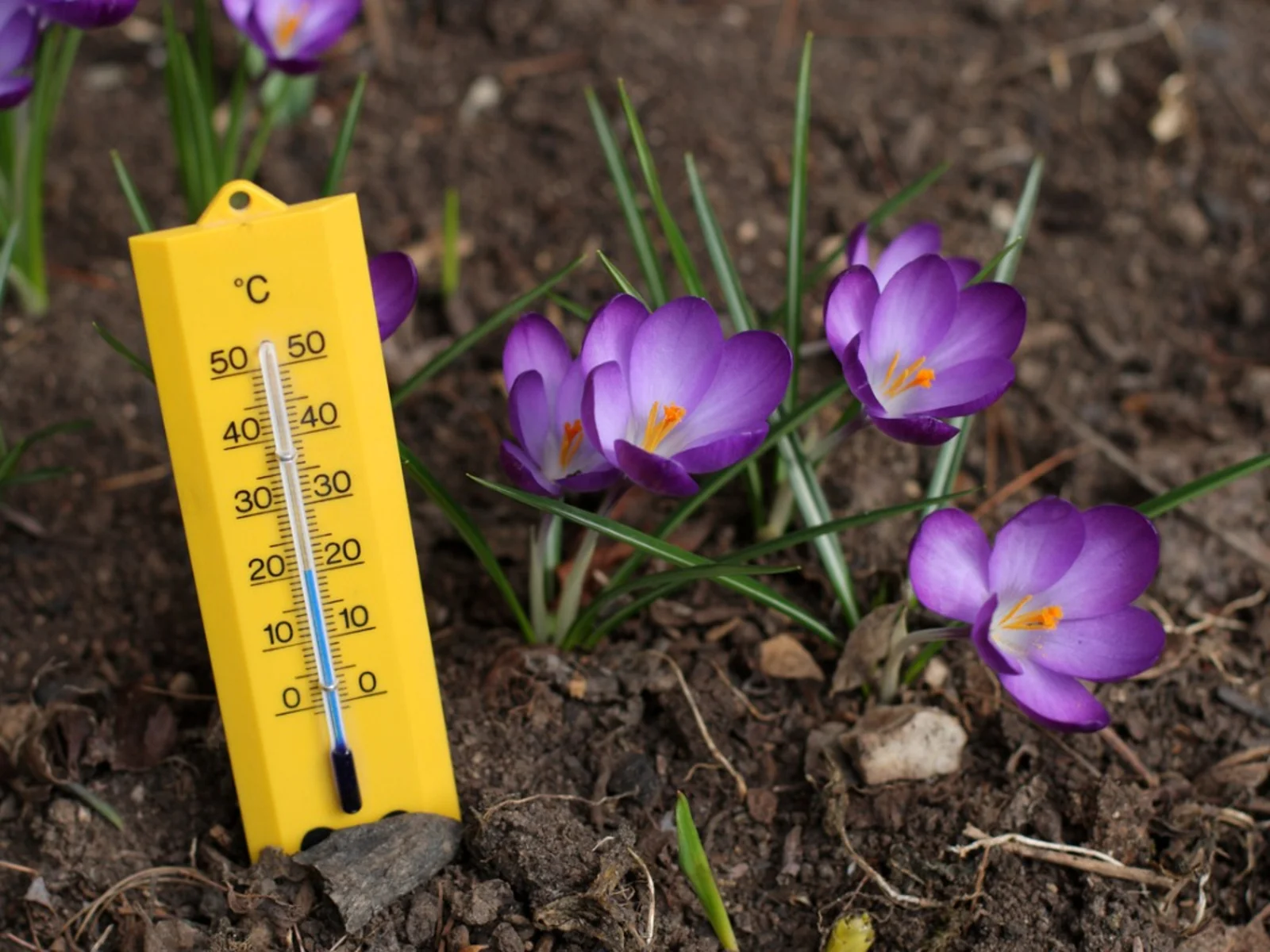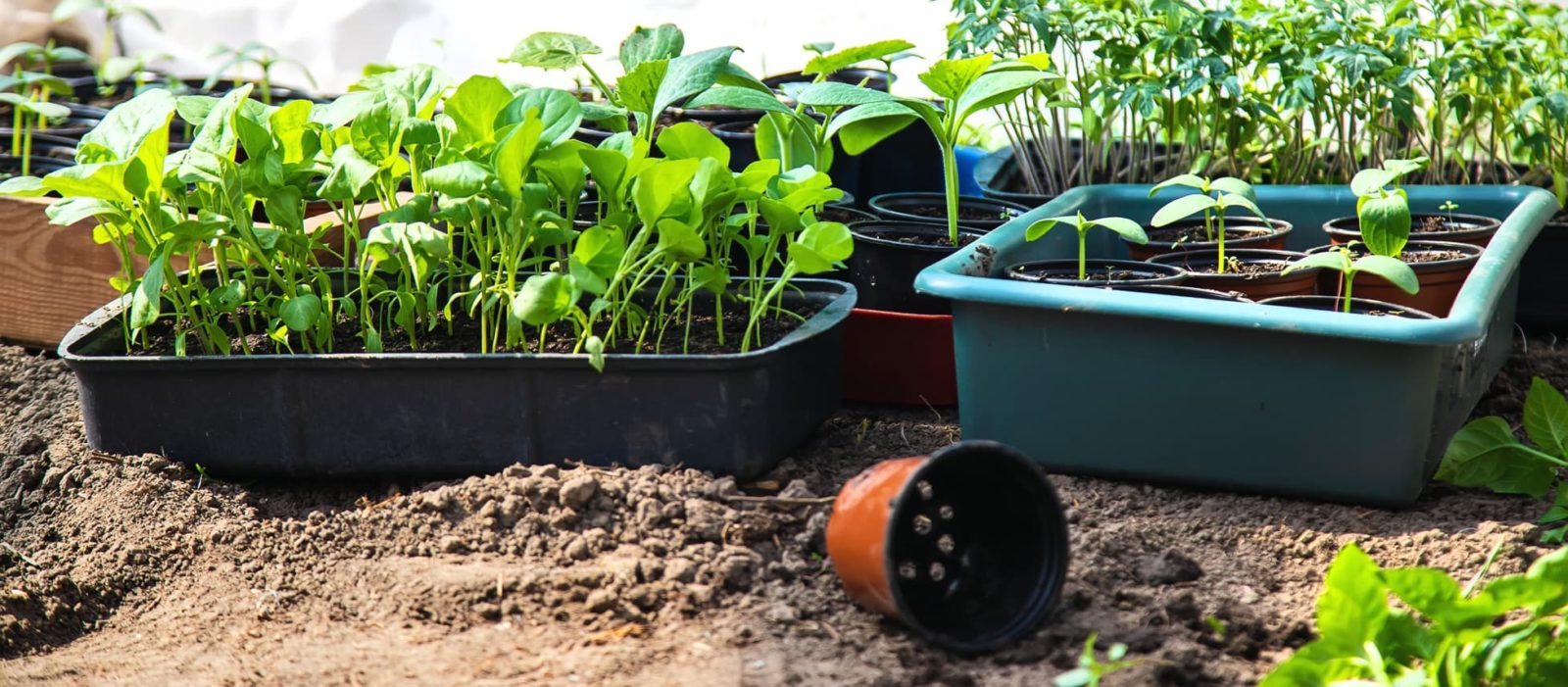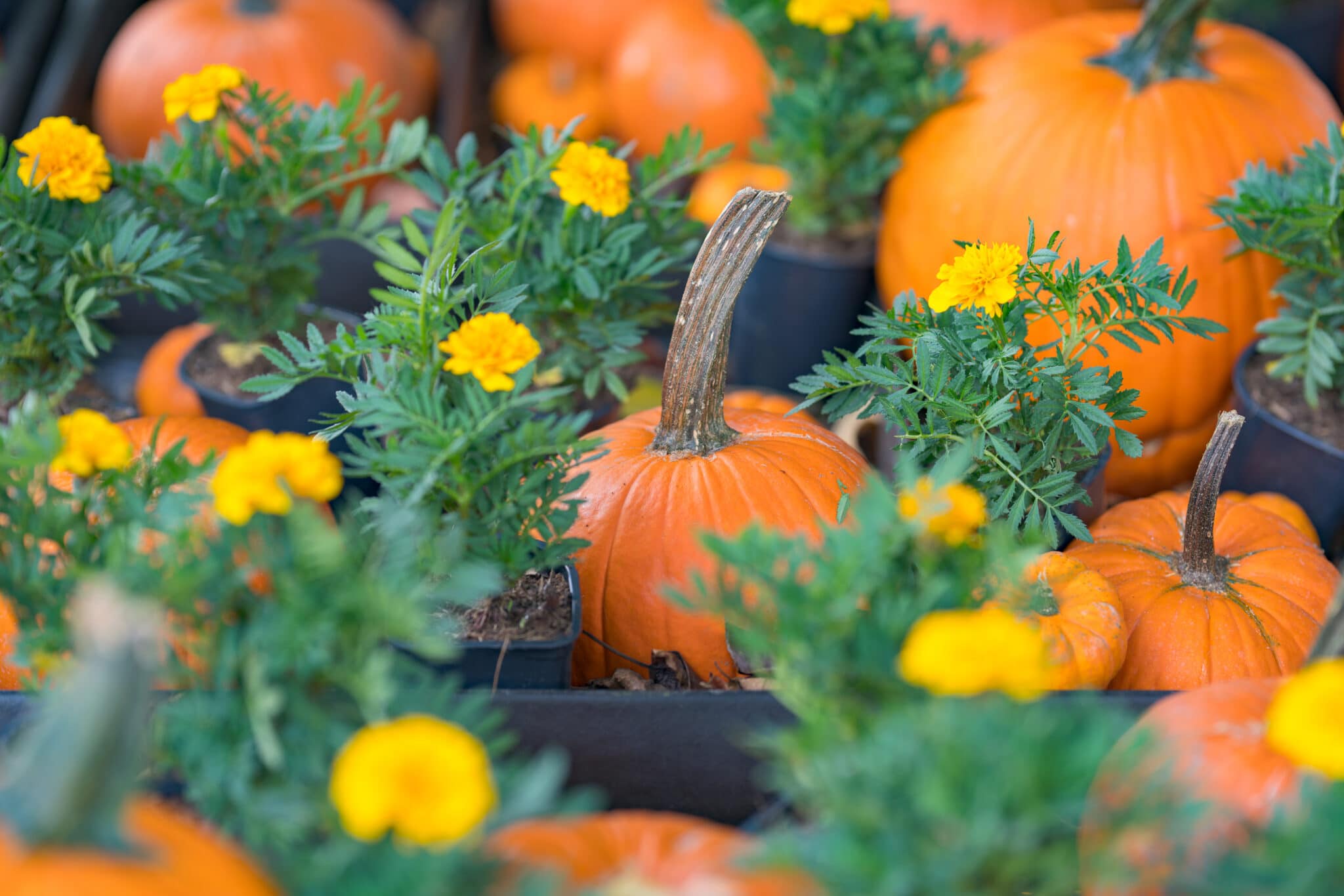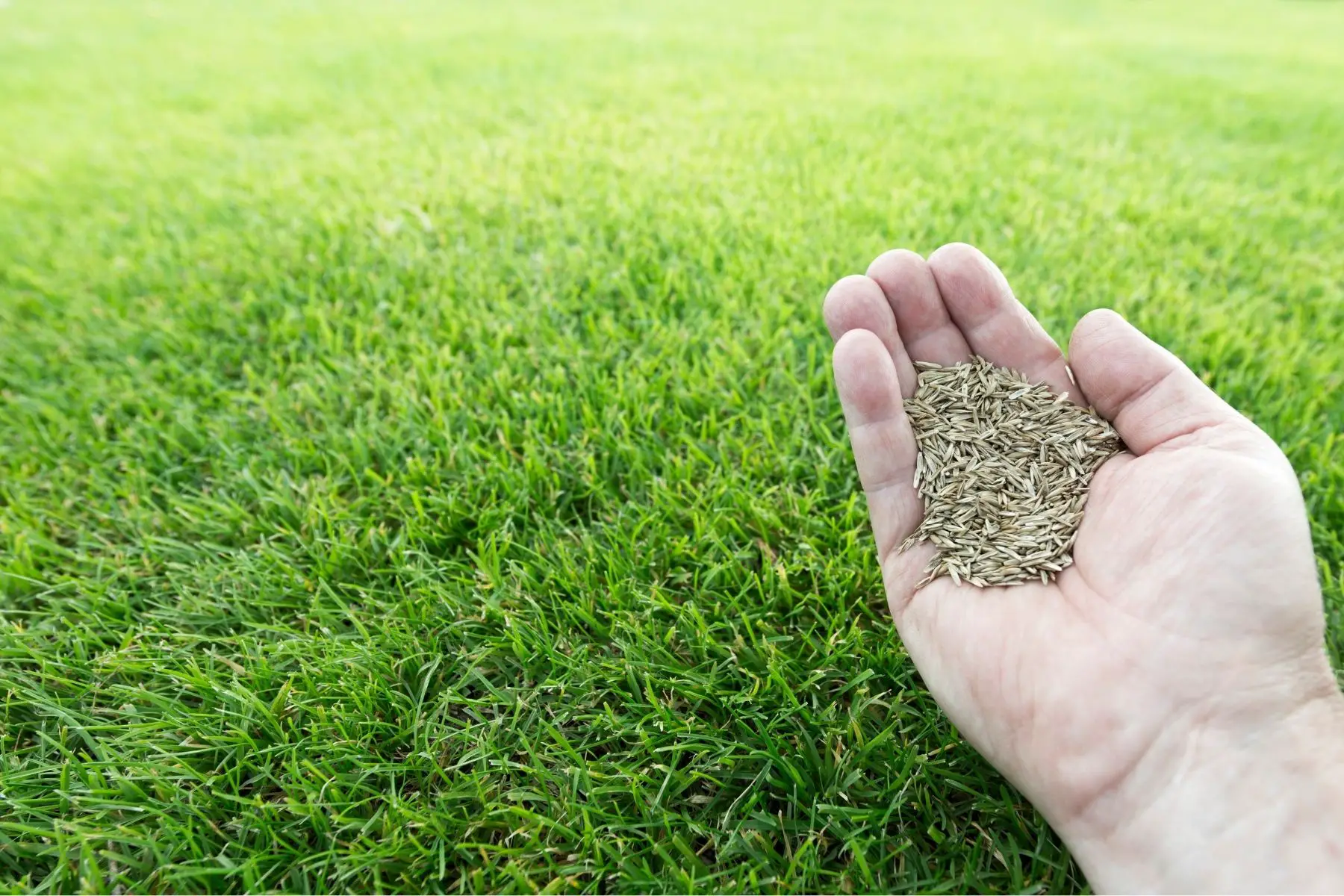Home>Gardening Techniques>Seasonal Gardening>What Temperature Can You Start Planting


Seasonal Gardening
What Temperature Can You Start Planting
Modified: February 9, 2024
Discover the ideal temperatures for starting your seasonal gardening. Find out when it's best to plant based on the type of plants and local climate conditions.
(Many of the links in this article redirect to a specific reviewed product. Your purchase of these products through affiliate links helps to generate commission for Chicagolandgardening.com, at no extra cost. Learn more)
Table of Contents
Introduction
Welcome to the wonderful world of seasonal gardening! If you have ever dreamt of creating a vibrant and flourishing garden, now is the perfect time to bring that dream to life. However, before you start grabbing your gardening tools and heading outside, there are a few important factors to consider. One of the most crucial elements for successful planting is understanding the ideal temperature range for different plants.
Temperature plays a vital role in the growth and development of plants. The right temperature ensures optimal germination, healthy root establishment, and overall plant vigor. Different plants have varying temperature requirements, and it is essential to know the appropriate temperature range for the specific plants you intend to grow.
Whether you are a seasoned gardener or just starting out, understanding the importance of temperature will help you plan your gardening activities effectively. In this article, we will explore the ideal temperature range for planting, as well as some tips to protect your plants from frost and ensure their successful growth. So, let’s dive in and discover the magical world of seasonal gardening!
Factors to Consider Before Planting
Before you get your hands dirty in the garden, there are a few important factors to consider to ensure the success of your planting endeavors. These factors will help you create the optimal environment for your plants and maximize their growth potential. So, let’s take a closer look at what you need to consider before you start planting.
1. Soil Quality: The foundation of a healthy garden lies in its soil. Before planting, it is crucial to assess the quality of your soil. Testing the soil pH level and nutrient content can help you determine if any amendments are needed to create the right growing conditions for your plants.
2. Sunlight Exposure: Most plants require a certain amount of sunlight to thrive. Before planting, it’s essential to assess the sunlight exposure in your garden. Determine which areas receive full sun, partial shade, or full shade throughout the day. This will help you choose the appropriate plants that match the sunlight conditions in your garden.
3. Watering Requirements: Different plants have varying water needs. Some plants prefer moist soil, while others thrive in dry conditions. Before planting, consider the watering requirements of the plants you wish to grow. This will help you design an efficient irrigation system and ensure that your plants receive the right amount of water.
4. Gardening Zone: Every region has its own unique climate and growing conditions. Understanding your gardening zone will help you select plants that are suitable for your specific climate. The United States Department of Agriculture (USDA) has divided the country into different gardening zones based on temperature ranges. Knowing your gardening zone will guide your plant selection and planting schedule.
5. Pest and Disease Management: It’s important to be prepared to handle common pests and diseases that may affect your plants. Before planting, educate yourself about the potential pests and diseases in your area and learn effective organic methods to manage them. This will help you proactively protect your plants and prevent any potential damage.
By considering these important factors before diving into planting, you will set a strong foundation for your garden and ensure that your plants have the best chance of flourishing. Now that we’ve covered the important preliminary steps, let’s move on to the ideal temperature range for planting.
Ideal Temperature Range for Planting
The ideal temperature range for planting varies depending on the type of plant and its tolerance to different temperature extremes. Understanding these temperature requirements is essential for ensuring the healthy growth and development of your plants. Let’s explore the ideal temperature range for planting and how it can influence your gardening success.
Cold-Tolerant Plants: Some plants, known as cold-tolerant plants, can withstand low temperatures and even frost. These plants can be planted early in the season when the temperatures are still cool. Examples of cold-tolerant plants include lettuce, kale, spinach, broccoli, and peas. These plants thrive in temperatures ranging between 45°F (7°C) and 60°F (15°C). Planting them during the early spring or late fall when the soil is workable and the threat of frost has passed is ideal.
Warm-Season Plants: On the other hand, warm-season plants require higher temperatures to thrive. These plants, such as tomatoes, peppers, cucumbers, and squash, need temperatures above 60°F (15°C) for optimal growth. Planting warm-season plants too early, when temperatures are still cool, can hinder their growth and make them more susceptible to frost damage. It’s best to wait until the last expected frost date has passed and the soil temperature has warmed up to ensure successful growth.
Transition-Season Plants: Some plants, often referred to as transition-season plants, have a broader temperature range and can tolerate both cool and warm temperatures. These plants, including carrots, radishes, beets, and herbs like parsley and cilantro, can be planted in spring and fall. They can tolerate temperatures between 40°F (4°C) and 75°F (24°C) and are adaptable to fluctuating temperatures.
Keep in mind that temperature ranges can vary slightly depending on the specific cultivar or variety of the plant. It’s always a good idea to check the specific temperature preferences recommended for the particular plants you are planning to grow.
Understanding the ideal temperature range for planting is crucial for ensuring the successful growth of your plants. By selecting the appropriate plants for your climate and planting them at the right time, you can create an environment that promotes healthy growth and bountiful harvests. Now that we know the ideal temperature range for planting, let’s explore the best time to start planting.
Cold-Tolerant Plants
Cold-tolerant plants are a gardener’s dream, as they can withstand lower temperatures and even thrive in cool conditions. These hardy plants are excellent choices for early spring or late fall planting when the temperatures are still chilly. Let’s explore some popular cold-tolerant plants and how they can enhance your seasonal garden.
Lettuce: Lettuce is a cool-season vegetable that thrives in temperatures between 45°F (7°C) and 60°F (15°C). There are various lettuce varieties, including leaf lettuce, romaine, and iceberg, each with its own unique flavor and texture. Early spring and late summer are perfect times for planting lettuce. The cool temperatures promote crisp and flavorful leaves.
Kale: Kale is a nutritional powerhouse and an excellent addition to any cold-season garden. It can tolerate frost and is packed with vitamins and minerals. Kale performs best in temperatures between 50°F (10°C) and 75°F (24°C). Plant kale seedlings or seeds in early spring or late summer for a bountiful harvest of this leafy green vegetable.
Spinach: Spinach is another cool-season vegetable that thrives in temperatures ranging from 35°F (2°C) to 75°F (24°C). It is rich in iron and other essential nutrients. Spinach can be direct-sown or transplanted in early spring or late summer. Provide adequate moisture and ensure good drainage for successful spinach cultivation.
Broccoli: Broccoli is a cold-tolerant vegetable that can withstand temperatures as low as 25°F (-4°C). It prefers temperatures between 45°F (7°C) and 75°F (24°C). Broccoli plants should be started indoors and transplanted into the garden early in spring or late in summer. The heads, or florets, can be harvested when they reach a desirable size.
Peas: Peas are cool-season legumes that prefer temperatures between 40°F (4°C) and 75°F (24°C). They can tolerate light frost and are usually planted directly into the garden soil. Peas should be sown in early spring or late fall, as they do not perform well in hot summer temperatures. Harvest the sweet and tender pea pods when they are fully developed.
In addition to these popular cold-tolerant plants, other options for your cold-season garden include carrots, radishes, beets, and onions. These vegetables can tolerate cooler temperatures and are excellent choices for early spring or late fall planting.
By incorporating cold-tolerant plants into your seasonal garden, you can extend your harvest and enjoy fresh produce even during cooler months. These resilient plants will not only survive in lower temperatures but also thrive, providing you with a bounty of flavors and nutrients. Now that we’ve explored cold-tolerant plants, let’s move on to warm-season plants and the best time to start planting them.
Warm-Season Plants
As the temperatures rise and summer approaches, it’s time to embrace the vibrant and diverse range of warm-season plants. These plants thrive in higher temperatures and require the sunny and balmy conditions of the summer months to reach their full potential. Let’s explore some popular warm-season plants that will bring color, flavor, and beauty to your seasonal garden.
Tomatoes: Tomatoes are undoubtedly one of the most beloved warm-season plants. These versatile fruits come in a variety of sizes, colors, and flavors. Tomatoes require temperatures above 60°F (15°C) to thrive. It’s best to wait until all danger of frost has passed and the soil has warmed to plant tomato seedlings. Provide support for the plants as they grow, and enjoy a bountiful harvest of homegrown tomatoes.
Peppers: Peppers, whether sweet or spicy, are a staple in many gardens. Bell peppers, jalapenos, and chili peppers all fall into the warm-season category. They need temperatures above 60°F (15°C) for optimal growth. Start pepper seeds indoors and transplant the seedlings outside after the threat of frost has passed. Peppers thrive in full sunlight and well-draining soil.
Cucumbers: Cucumbers are refreshing, versatile, and relatively easy to grow. They require temperatures above 60°F (15°C) and thrive in full sunlight. Start cucumber seeds directly in the garden after the last expected frost date. Provide a trellis or support system for the vines to climb, and enjoy the crisp and juicy cucumbers all summer long.
Squash: Squash varieties, including zucchini, yellow squash, and butternut squash, are prolific producers in warm weather. These plants require temperatures above 60°F (15°C) and plenty of sunlight. Start squash seeds directly in the garden after the last frost date, providing ample spacing between plants. Harvest the fruits when they reach the desired size for a delicious addition to your summer meals.
Beans: Beans, both bushy and climbers, are warm-season plants that are easy to grow and highly productive. They require temperatures above 60°F (15°C) to thrive. Sow bean seeds directly in the garden once the soil has warmed up, typically after the last frost date. Provide support for the climbing varieties, and enjoy a harvest of tender and flavorful beans throughout the summer.
These warm-season plants, along with others like corn, eggplant, and summer squash, bring a burst of color, flavor, and texture to your garden. By selecting the appropriate warm-season plants for your climate and providing them with the right conditions, you will be rewarded with an abundant harvest. Now that we’ve covered warm-season plants, let’s explore the best time to start planting them.
Best Time to Start Planting
Timing is key when it comes to planting your seasonal garden. Starting your plants at the right time ensures that they have the best chance to grow healthily and produce a bountiful harvest. The best time to start planting depends on various factors, including your location, climate, and the specific plants you are growing. Let’s explore some guidelines to help you determine the optimal planting times.
First and Last Frost Dates: Determining the average dates of the first and last frost in your area is crucial for planning your planting schedule. The last frost date is the date when it is safe to assume that the risk of frost has passed, and it’s generally recommended to start planting warm-season plants after this date. Conversely, the first frost date is when the temperatures start to dip again in the fall, signaling the end of the growing season. Using these dates as reference points can help you plan your planting activities accordingly.
Gardening Zone: Your gardening zone, as determined by the USDA Hardiness Zone Map, is another essential factor to consider. This map divides different regions based on their average annual minimum temperatures. Knowing your gardening zone can give you valuable information about the suitability of certain plants for your area and guide your planting decisions.
Recommended Planting Windows: Planting windows provide an estimated timeframe for when it is best to start planting specific crops. These windows take into account both the average frost dates and plant growth requirements. They can vary depending on the plant and the region. Many seed packets and gardening resources provide recommended planting windows, which can serve as a useful guideline for your gardening activities.
Soil Temperature: Monitoring soil temperature is essential for successful planting. Different plants have specific soil temperature requirements for good germination and root establishment. Warm-season plants generally prefer soil temperatures between 60°F (15°C) and 70°F (21°C), while cool-season plants can tolerate lower temperatures. Investing in a soil thermometer and regularly checking the soil temperature can help you determine when it’s time to start planting.
By considering these factors, you can confidently plan your planting schedule and ensure that you start your plants at the right time for optimal growth. Remember, gardening is a rewarding journey, and observing the changes in your plants and climate will ultimately guide your planting decisions.
Now that we’ve covered the best time to start planting, let’s explore some tips for protecting your plants from frost and other potential hazards.
Tips for Protecting Plants from Frost
While gardening brings immense joy and fulfillment, it is not without its challenges. One such challenge is the threat of frost, which can damage or even destroy your precious plants. However, with some preventive measures, you can protect your plants and ensure their survival. Here are some valuable tips for safeguarding your plants from frost:
Covering: Covering your plants is one of the most effective ways to protect them from frost. Use materials such as frost blankets, old bedsheets, or even plastic to create a temporary shelter. Secure the covers around the plants, making sure they extend all the way to the ground. This method creates a barrier that traps heat from the soil and raises the temperature around the plants.
Watering: Believe it or not, watering your plants before a frost can help protect them. Moist soil absorbs and retains more heat than dry soil, creating a protective barrier. Water your plants a day or two before the expected frost, allowing enough time for the soil to absorb the moisture.
Mulching: Applying a layer of organic mulch around your plants can help insulate the soil and protect the roots from freezing temperatures. Use materials like straw, leaves, or wood chips to create a protective layer about 2 to 3 inches thick. Mulch also helps retain moisture and suppresses weeds.
Potted Plants: If you have potted plants, it’s easier to move them to a sheltered location, such as a covered porch or indoors. Take advantage of the portability of potted plants and relocate them to protect them from frost. Ensure they receive adequate light during their indoor stay.
Use Row Covers: For larger garden beds or rows of plants, using row covers can be an effective solution. These covers are lightweight and permeable to light and water. They provide a layer of protection while allowing air circulation. Secure the row covers with hoops or stakes to create a tunnel-like structure over the plants.
Monitor the Weather: Stay informed about the weather forecast in your area to anticipate and prepare for potential frost. Keep an eye on the nighttime temperatures, as they are usually lower and more prone to frost. Plan your protection efforts accordingly to safeguard your plants from any sudden drops in temperature.
Plant Selection: When planning your garden, consider selecting plants that are more frost-tolerant or have shorter maturity times. This way, you can harvest your crops before the risk of frost increases. Research and choose plant varieties that are better adapted to your climate and can withstand cooler temperatures.
By implementing these tips, you can minimize the damage caused by frost and increase the chances of your plants surviving and thriving. Remember to be proactive and take preventive action whenever frost is anticipated. With proper protection, your plants can continue to flourish and contribute to the beauty and productivity of your seasonal garden.
Now that we’ve covered tips for protecting plants from frost, let’s summarize what we’ve learned in this article and reflect on the exciting world of seasonal gardening.
Conclusion
Seasonal gardening is a delightful journey filled with creativity, patience, and the joy of seeing your efforts bloom and flourish. Understanding the ideal temperature range for planting is crucial for the success of your garden. By considering the factors such as soil quality, sunlight exposure, watering requirements, gardening zone, and pest management, you can create the optimal environment for your plants to thrive.
Whether you choose to grow cold-tolerant plants in the early spring or late fall, or prefer the vibrant beauty of warm-season plants in the summer, each category has its unique requirements and rewards. It’s essential to start planting at the right time, based on the last and first frost dates, your gardening zone, and the specific recommendations for each plant.
Remember to take precautions to protect your plants from frost and other potential hazards. Covering, watering, mulching, and using row covers are effective ways to safeguard your plants from frost damage. By monitoring the weather and being proactive, you can prevent losses and ensure the survival of your garden.
As you embark on your seasonal gardening journey, embrace the beauty of nature and the ever-changing seasons. Enjoy the process of nurturing your plants, witnessing their growth, and celebrating the harvests. Gardening is a wonderful opportunity to connect with the natural world, reduce stress, and enjoy the fruits of your labor.
So, grab your gardening tools, prepare your soil, and get ready for a rewarding experience. With the right temperature knowledge, thoughtful planning, and a touch of creativity, your seasonal garden will become a haven of beauty and abundance. Happy gardening!









